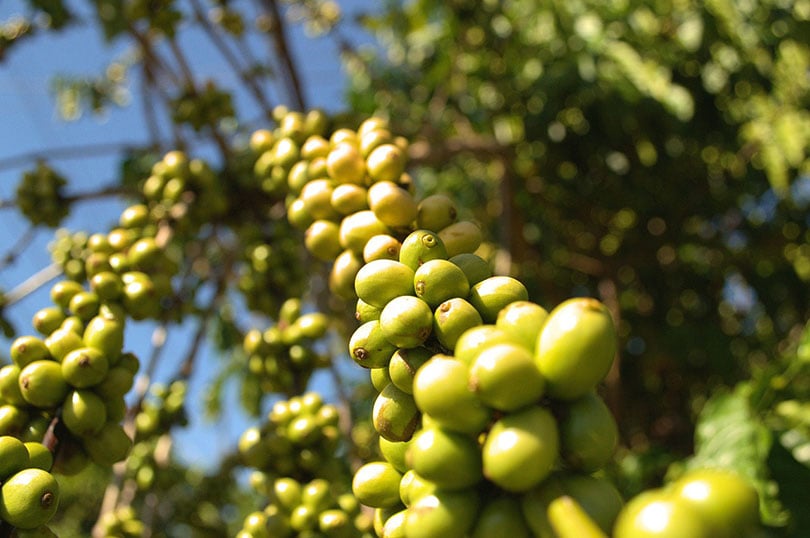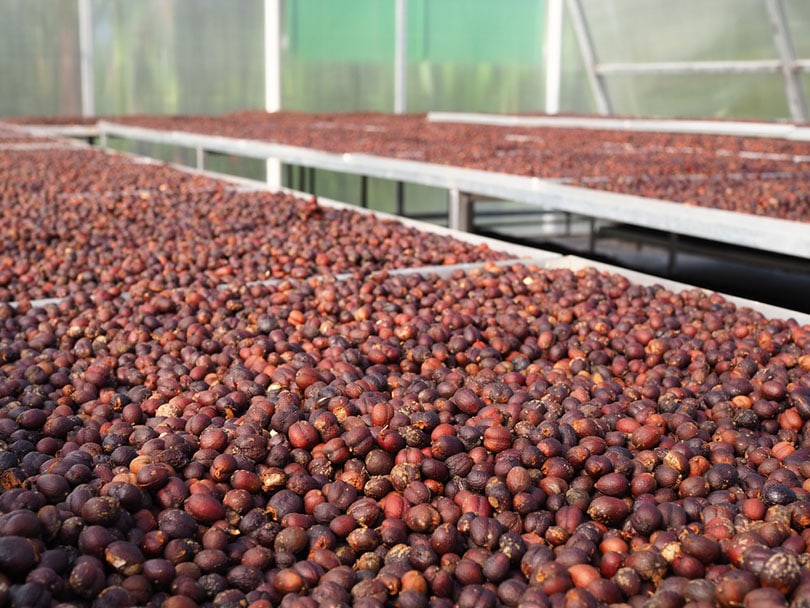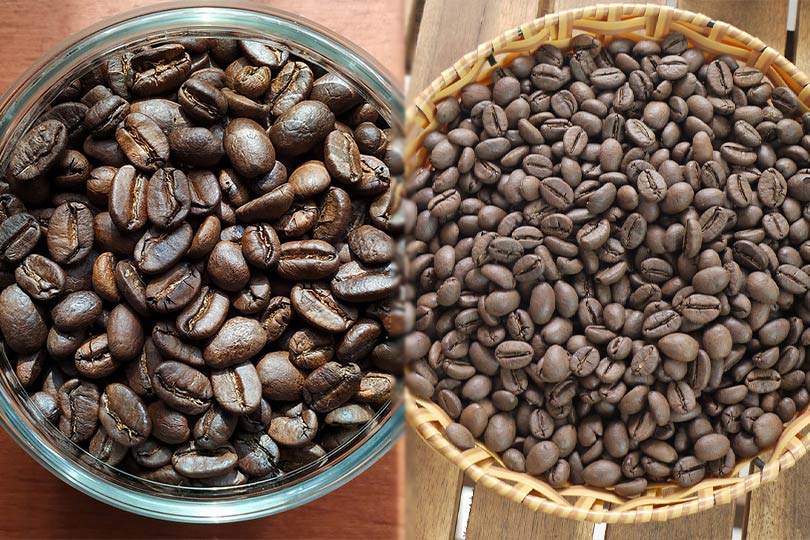
Coffee is a world favorite for starting the day off right. With the continuous additions of coffee-flavored drinks, shops, and brewing ideas, there’s no denying coffee’s power over us all. However, not many of us take the time to learn about the beans that grew to make our beloved cup of joe. Instead, we simply buy the beans we prefer or grounds in some cases, prepare them, and enjoy the fruits of others’ labor.
The coffee we enjoy throughout our days comes in two main varieties, Arabica and Robusta. The differences are easy to spot. Arabica is more difficult to grow. It also has a smoother taste, which makes it the most popular. Coffea canephora, or Robusta, however, is the hardier of the coffee beans, which means it’s easier to grow and can stand up to harsher elements than its counterpart, hence the name.
Unfortunately, the stronger taste and acidity level in Robusta coffee often give it a bad rap. However, it’s the perfect bean for espresso, especially the Italian variety, which is a base in many of the coffee drinks we’ve come to love over the years. Let’s learn a bit more about Robusta coffee beans, the facts behind them, the flavors, and even a few reasons why it is a bean that deserves a bit more respect.

The History of Robusta Coffee Beans
Robusta coffee was first discovered in the Congo during the 1800s. Coffea canephora can also be found growing natively in the tropical forests of Lake Victoria in Uganda. It was the discovery of Robusta coffee in the Congo that truly opened coffee cultivation to a new world. Robusta could grow in lowland areas, unlike Arabica which needs higher altitudes to thrive.
After the coffee rust disease wreaked havoc on Ceylon in 1869 and then wiped out the majority of low-altitude plantations in Java in 1876, Robusta was introduced to Southeast Asia. This hardier plant, which grows up to 10 meters high, is more resistant to diseases and was integral in the rebirth of coffee growth in these areas.
By the 20th century, Robusta coffee beans were truly on their way. However, the Second World War and the fight for independence in Africa did slow things down. Support from the new African governments, after the wave of independence, helped the Robusta trade find its footing again and continue growing.
With the spread of Robusta to other parts of the world, including Asia and Northern Brazil, other countries began to see massive growth spurts. Vietnam rose to the top as the main growing region for Robusta coffee beans. Today, Vietnam is considered the 2nd largest coffee producer in the world, thanks to this emergence and the hardiness of the Robusta coffee plant.

What Are the Different Types of Robusta Coffee Beans?
Robusta coffee has two main varieties, Nganda and Erecta. Nganda means wide-spreading shrub while Erecta describes a tall-standing coffee shrub. What’s most interesting about Robusta coffee plants is that they have cross-bred in the wild, creating multiple hybrids. Many of these hybrids, Catimor and Sarchimor for example, are labeled as Arabica when they are cultivated and sold. However, the presence of Robusta in the genetic makeup allows these hybrids to be more tolerant to diseases, especially coffee rust. It also allows more protection against the elements and easier growing requirements to support the continued growth of coffee.
Oddly enough, Robusta coffee has long been looked at as the bad guy of the coffee world. For years, it was considered the less-loved cousin of Arabica coffee. However, recent discoveries have brought a surprising twist to light. Robusta coffee isn’t Arabica’s cousin at all. In fact, it spawned Arabica coffee. You’ll even find that Robusta and Arabica spontaneously cross-breed in the wild. In the early half of the 20th century, the Timor hybrid emerged to prove this combination.
The Flavors of Robusta Coffee Beans
When discussing the flavors of coffee, it’s difficult due to each region offering its own unique profiles. The care and attention offered to the plants during their growth also contribute quite a bit to the taste. This is especially true when it comes to Robusta. With it being the hardier of the coffee plants, Robusta beans aren’t often given the special drying procedures or picking processes as Arabica. When this is the case, you can come up with Robusta beans that are quite harsh or bitter tasting. Some people even compare it to having a burnt taste when brewed.
Overall, Robusta is a flavorful coffee with a deep mouthfeel. Some of the most common flavor notes are dark chocolate, nuts (especially almonds), and even whisky. Robusta is more acidic than Arabica coffee which explains the bold, or strong taste. You will find that when grown as a single-origin plant, it will have earthy tones that come from the soil it grows in. This is what determines the main flavor profile. You won’t lose the chocolatey flavors or the boldness that is inherent in these plants, however.

Advantages of Robusta Coffee Beans
When talking about the advantages of Robusta coffee beans, there is a lot to be said. We’ll take a look at each main point to help you better understand these beans and why they are still so appealing.
Hardiness
Yes, we’ve already mentioned that Robusta coffee plants can withstand harsher low-altitude growing conditions and stand up better to diseases that often plague Arabica plants, but the point should still be mentioned. The hardiness of the Robusta coffee plants not only ensures it stays popular and that we have options for our cups, but it keeps farmers in business.
Easier to Process
With Arabica coffee being considered the premium bean, it’s understandable that the cultivating process is slow and tedious. Robusta takes advantage of this area. It doesn’t need to be wet-processed, which takes time and lots of attention. Instead, it can be dry-processed, helping farmers cultivate more products.

Caffeine
We have yet to mention the caffeine in Robusta coffee beans. This is where Robusta steps in as the clear champion for some coffee lovers. Robusta beans naturally have twice the caffeine as their Arabica counterparts. The caffeine content is why some people will drink nothing but Robusta. This also makes Robusta a great choice when making espresso, especially for Italian espresso which is characteristically much stronger.
You’ll also find many coffee brands out there that focus on caffeine, marketing big bold tastes and enough caffeine to keep you going throughout the day. The beans of choice for most of these coffee brands are Robusta as they can be cultivated with care which gives them a great flavor and all that extra caffeine.
Cost
If you go to your local store to buy coffee, those made with Arabica beans often cost more than Robusta varieties. It makes sense why this is the case. As we’ve previously mentioned, the processes needed to successfully grow, care for, and harvest Arabica is more difficult than what’s required for Robusta beans. When that’s the case, prices are normally quite a bit higher when they hit the market.
Disadvantages of Robusta Coffee Beans
The main disadvantages of Robusta coffee beans are the bad reputation they’ve received due to the harshness and acidity inside and the amount of rain required to keep the plants thriving. While the plants are generally quite hardy, moisture is something they can’t do without. This is why most Robusta farms flourish in tropical rainforest areas. This is also where you’ll find them growing wild.


Frequently Asked Questions (FAQs)
Other than caffeine, why are Robusta beans preferred in espresso?
The caffeine in the Robusta coffee beans, twice that of Arabica, is known to help create a better crema for espressos. Crema is the frothy, creamy layer on top of an espresso that people love to enjoy.
What countries produce a lot of Robusta coffee beans?
Vietnam is of course the winner in this department. Robusta is also produced in Indonesia, Brazil, the Democratic Republic of the Congo, Uganda, and India.
Is Robusta healthier than Arabica coffee?
You will find that Robusta coffee beans contain more antioxidants and chlorogenic acids than their Arabica counterparts. This can help raise metabolism and even lower blood pressure.

Conclusion
While Robusta coffee beans may have a bad reputation in the coffee world, understanding this coffee and its importance can open your eyes to a new world of coffee drinking. If you’re looking for a bolder coffee with higher caffeine content, one made with Robusta coffee beans is your answer. For true coffee lovers, be willing to try the varieties of Robusta to see if it’s for you. We do suggest, however, choosing beans that are grown and processed with care. This will make all the difference in any coffee you enjoy.
Featured Image Credit: Andre_K, Shutterstock














